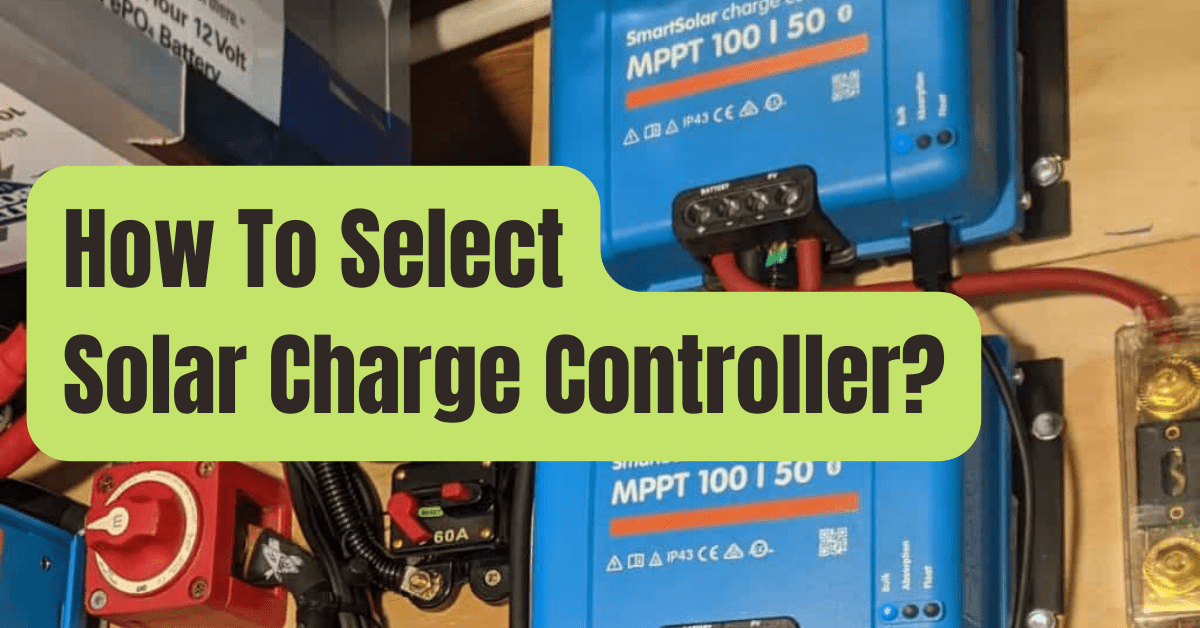PWM Or MPPT For The Charge Controller?
Are you uncertain which charge controller to use for your off-grid solar power system? Solar charge controllers come in a variety of styles and pricing points on the market.
Which one, however, is best for you?
In order to make a reliable and long-lasting purchase, it is crucial to understand their qualities and mode of functioning.
In order to assist you in selecting the best charge controller for your solar power system depending on the kind of panels and battery you want to install, MPPTSOLAR has chosen two charge controllers for solar panels, one PWM and the other MPPT.
It’s important to be aware that choosing some panels over others during the construction of your solar power system may recommend using one charge controller rather than another.
The same manufacturer, German firm Steca Solar, produces both the PWM and MPPT charge controllers that we shall compare.
When should you use a PWM and when an MPPT controller?
As previously stated, the kind of panels we have (or want to install) and the battery bank determine the charge controller technology that should be used.
The MPPT controller is able to fully use a solar panel with a much higher voltage than the battery bank and, as a result, it permits to create more output power than a PWM controller.
In general, the PWM charge controller is less expensive than an MPPT charge controller.
The PWM charge controller is advised if the solar panel voltage is somewhat higher than the battery voltage (often a 12V 30-cell panel and 12V battery), since it has a daily yield in this situation that is comparable to the MPPT.
In order to help you choose which charge controller technology to employ, we have produced a very straightforward chart.
- The quantity of cells in your panels
- The battery bank’s voltage that you wish to charge
| Panels and Batteries | Controller Type |
| 36-cell Panels and 12V Batteries | MPPT |
| 48-cell Panels and 12V/24V Batteries | MPPT |
| 54-cell Panels and 12V/24V Batteries | MPPT |
| 72-cell Panels and 12V/24V Batteries | MPPT |
| 114-cell Panels and 48V Batteries | MPPT |
| 30-cell Panels and 12V Batteries | PWM |
| 60-cell Panels and 24V Batteries | PWM |
| 120-cell Panels and 48V Batteries | PWM |
How can I determine the voltages of the panels based on their cells?
| Panel Cells | Rated voltage | Open circuit voltage |
| 30 cells | 12V | 18V |
| 36 cells | 12V | 21V |
| 48 cells | 18V | 30V |
| 54 cells | 18V | 33V |
| 60 cells | 24V | 36V |
| 72 cells | 24V | 42V |
| 120 cells | 48V | 72V |
| 144 cells | 48V | 84V |
What behavior do the two charge controllers exhibit?
Watch the following two images to observe how the current behaves in the PWM charge controller (PR3030) and the MPPT charge controller (Solarix).
We used a 100W monocrystalline solar panel for the solar system.
For “photographic” purposes, the panel’s tilt was not perfectly perpendicular to the sun.
Fiamm 12V lead-acid battery is the power source.
1. PWM charge controller (PR3030)
As you can see from the picture, the PWM charge controller uses virtually all of the 1.60A current at the solar panel’s output (1.57A) to replenish the 12V battery.
The PR3030 charge controller features a display function that shows the battery charge % and can handle currents up to 30A.
In this scenario, he informs us that the battery is 76 percent charged.
Here are the numbers:
- Input current: 1,60A
- Output current: 1,57A
- Technology: PWM
2. MPPT charge controller (Solarix)
The Solarix MPPT controller takes into account all of the solar panel’s output, in contrast to the PWM charge controller, which only considers current while charging the battery (therefore voltage and current).
In actuality, the MPPT regulator converts the difference between the voltage provided by the panel (for example, 36V) and the voltage needed by the battery at that precise instant (for example, 14V) into current that is helpful for the recharging process.
The snapshot shows that the charge controller’s input current is 1.68A, while the current to the battery is much higher at 2.07A.
The data in this instance are:
- Input current: 1,68A
- Output current: 2,07A
- Technology: MPPT
We use 100% of the electricity from the panel with the Solarix MPPT charge controller! The advantages of using MPPTSOLAR charge controllers, however, don’t stop there.
In fact, the MPPTSOLAR charge controllers not only make use of MPPT technology and accept panels with high voltages, but also provide the ability to recharge various battery types, including contemporary LiFePO4 batteries, easily select the charging program, remotely monitor the state of charge, and much more.
Do you want to learn more? Learn about our MPPT solar charging controllers.










